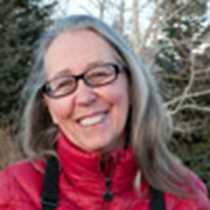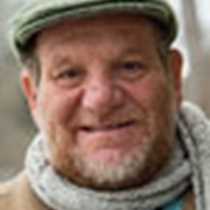After last night’s post-dinner sea ice walk and celebration, we woke to find ourselves deeper in the Weddell Sea. The island before us was Devil Island. Snowflakes the size of quarters parachuted from the sky. Shallow water revealed rocks but also trapped a sculpture garden of icebergs. Blue ice pyramids and ship prows jutted from the sea. Occasionally they broke apart with sudden thunderous crashing, then small bits sat on shore where once the stranded iceberg stood.
Up the hill, we climbed towards one of the horns. The island has two horns which gave sailors plenty of reason to name it Devil Island. But we were not alone. An estimated 20,000 Adélie penguins nest on Devil Island. They climbed the ridges with family matters to tend to. Fat chicks avoided the large snowflakes by huddling between the legs of their dotting parent. Brown skuas flew overhead looking to snatch an egg or even a chick. Those of us needing a good climb passed through the saddle of the island and made our way to the top of the ridge where we were regaled with stories by
The snow thickened then lessened during our visit. The large snowflakes added a bit of magic or maybe it is our dreams of a white Christmas that gave the snow a dream-like quality.
We passed our sister ship, National Geographic Explorer and had a drive-by visit with arms waving holiday wishes, snowballs tossed, and horns
We sailed west toward the Bransfield Strait. Along the way, we heard presentations from our undersea specialist, Maya Santangelo, about her year exploring under the waves with the Rolex Scholar’s program and from our National Geographic photographer, Max Lowe, about photography in the great white world of snow and ice.
Humpback whales interrupted our briefing for tomorrow but we got the main message which is to be prepared for another fantastic day in the magical world of the Antarctic. Tomorrow is the austral summer solstice, the longest day of the year. I’m certain it will be a good one. Happy Solstice.








